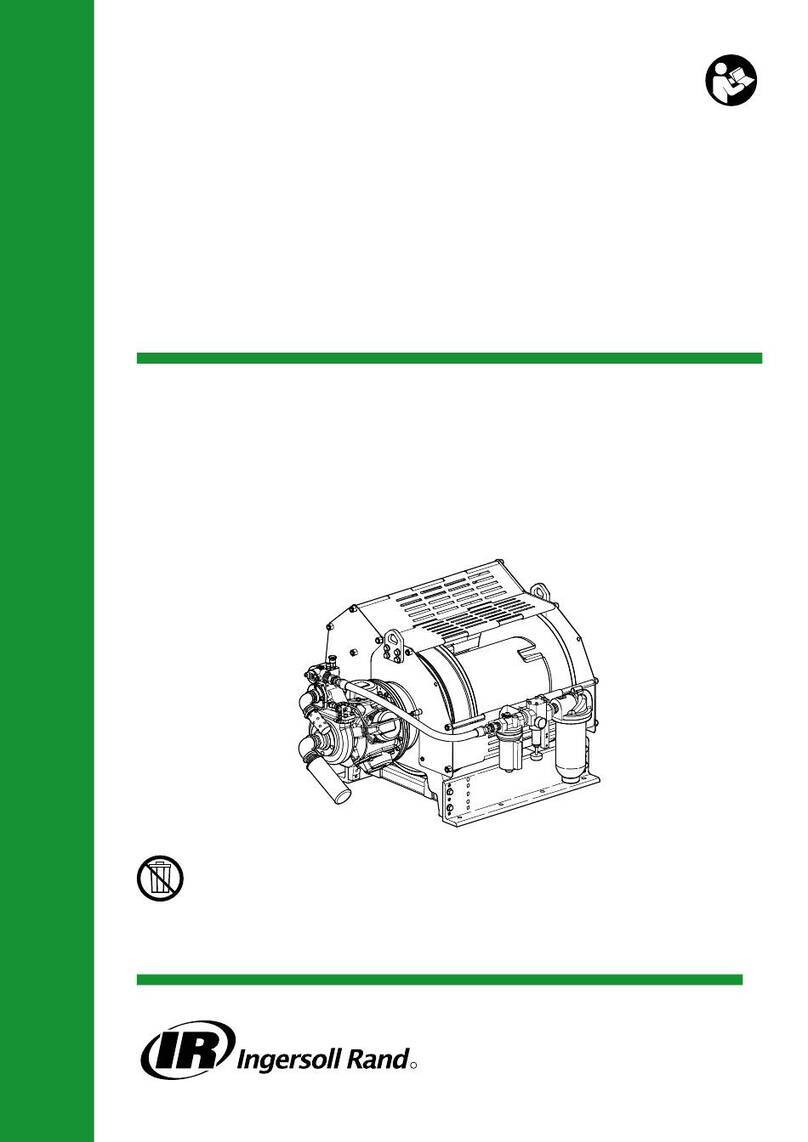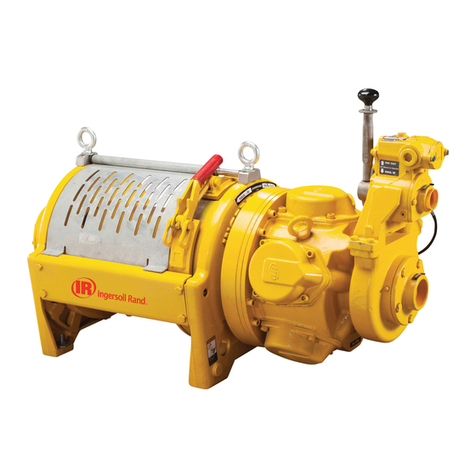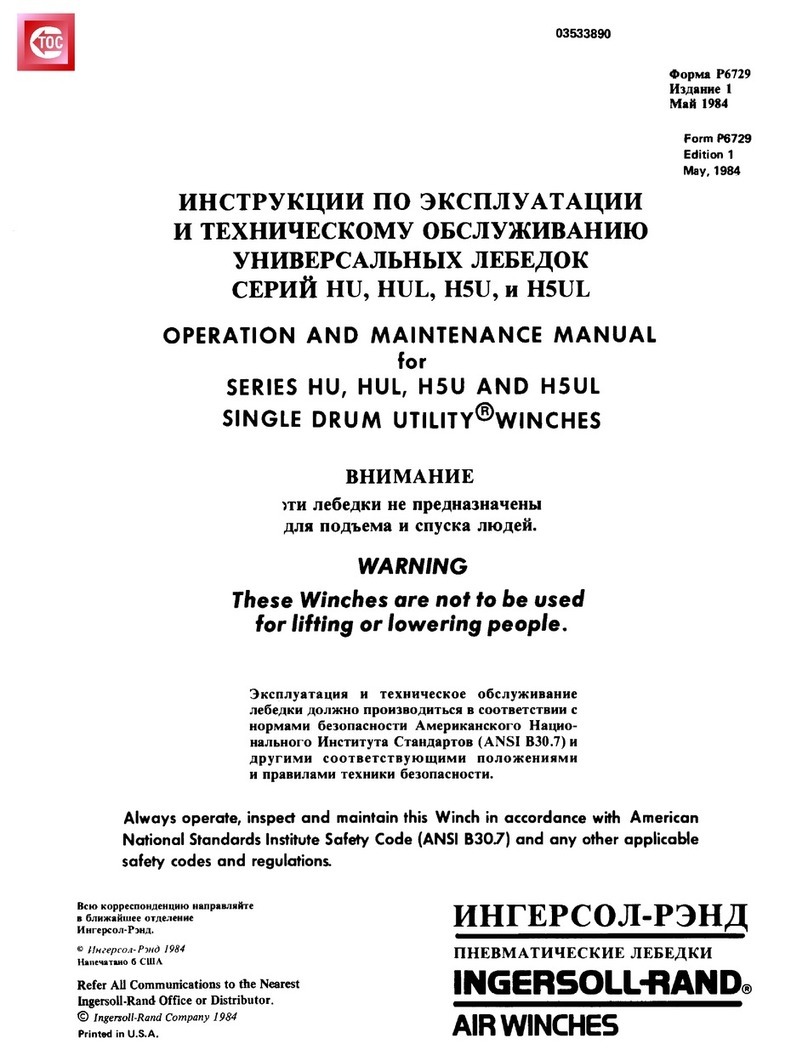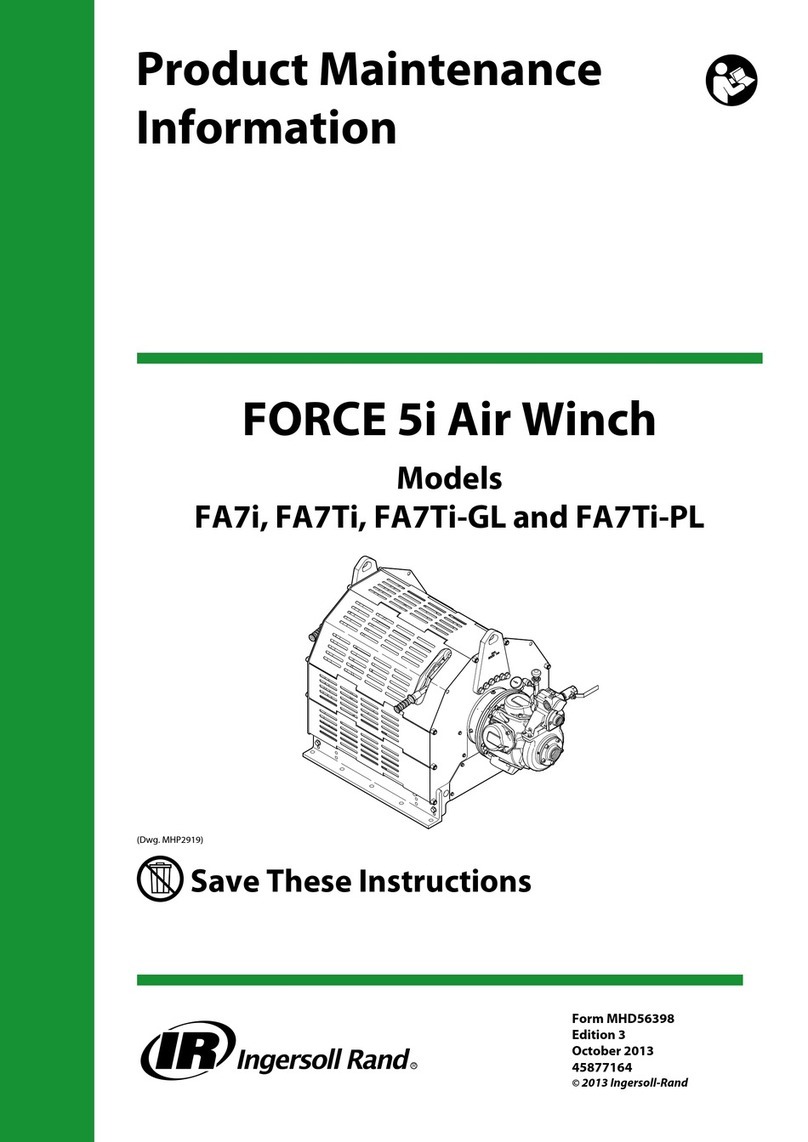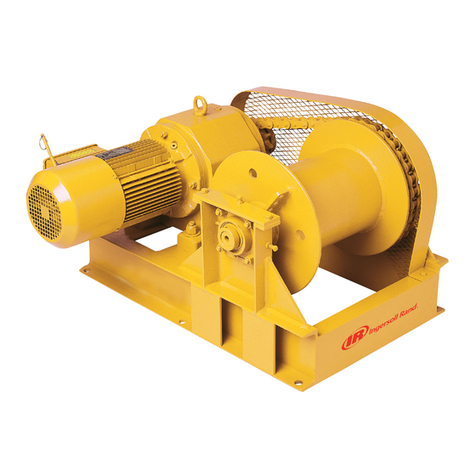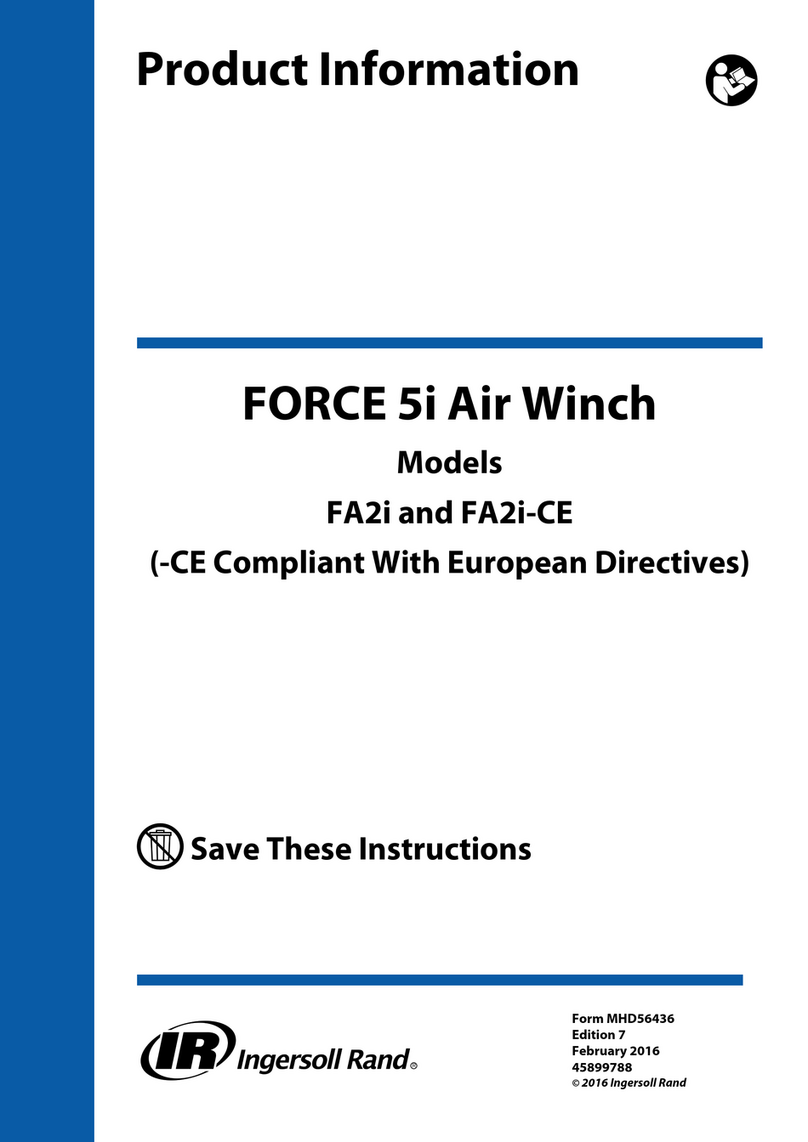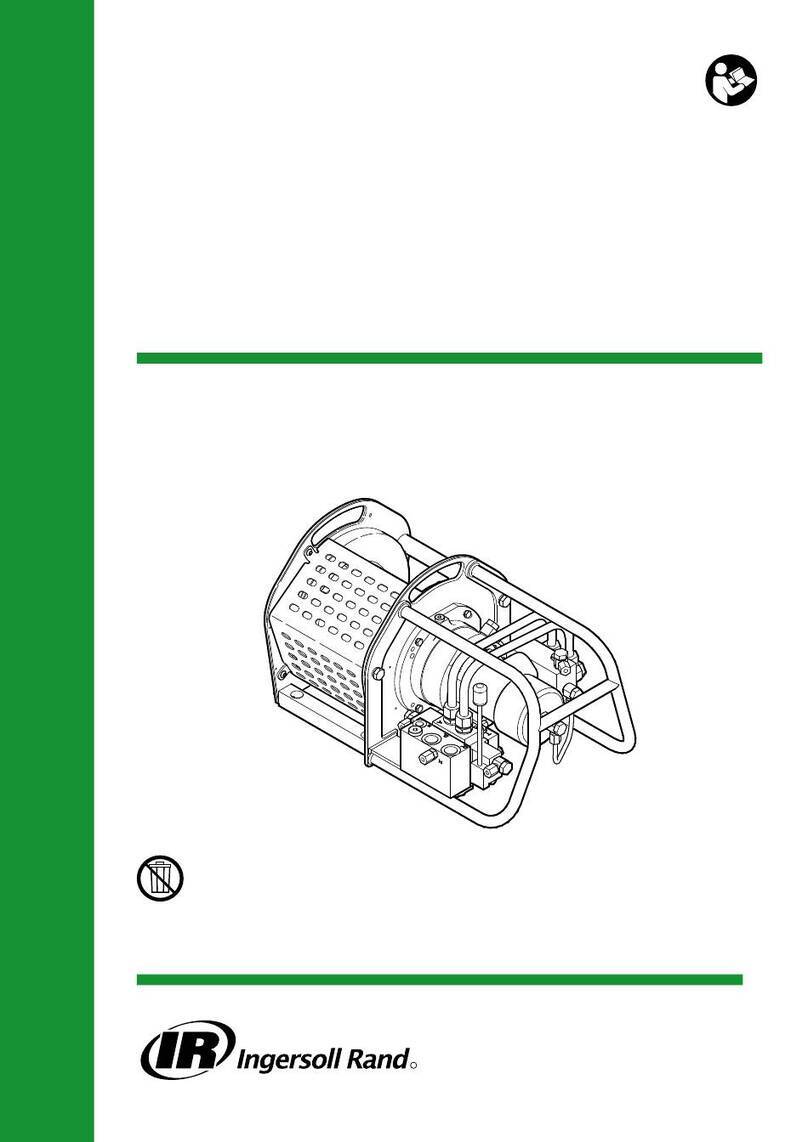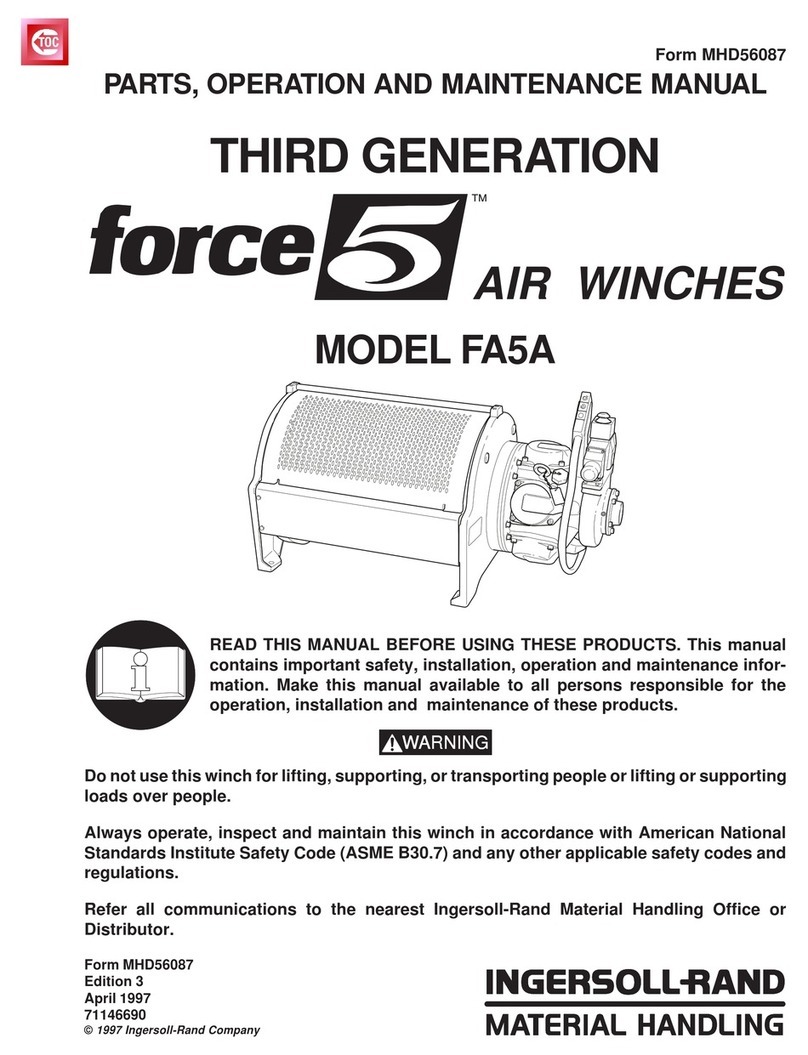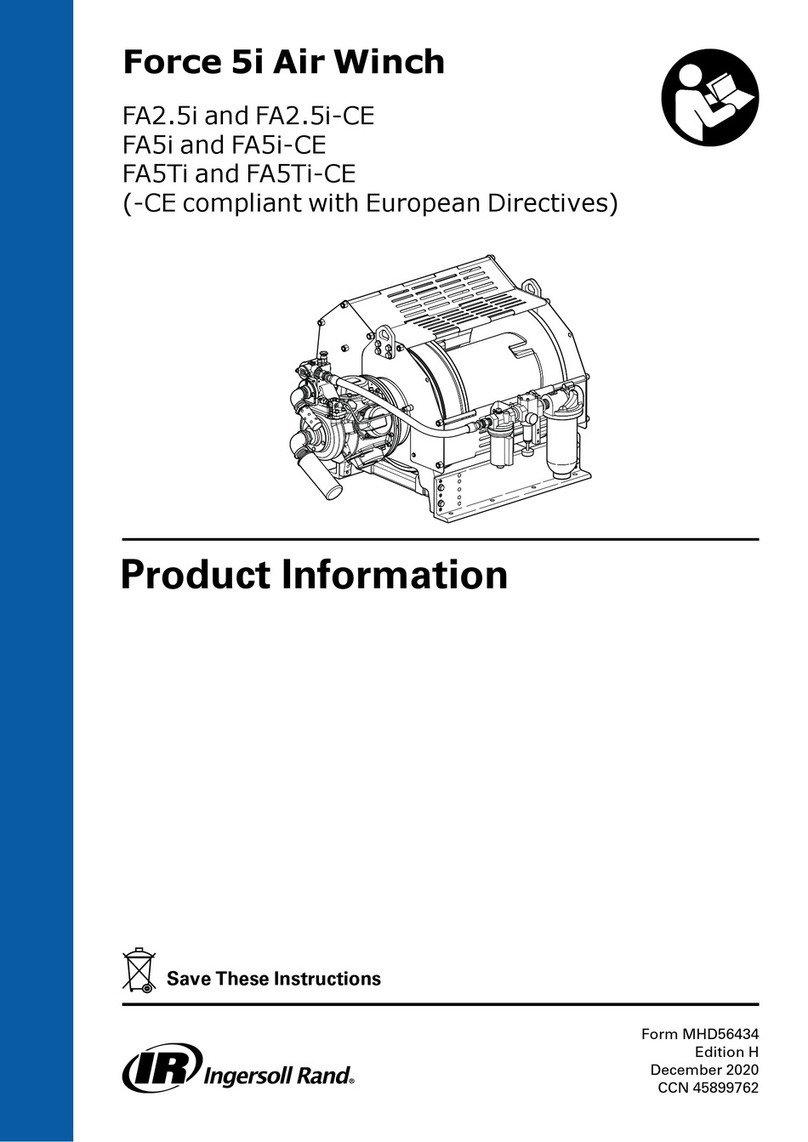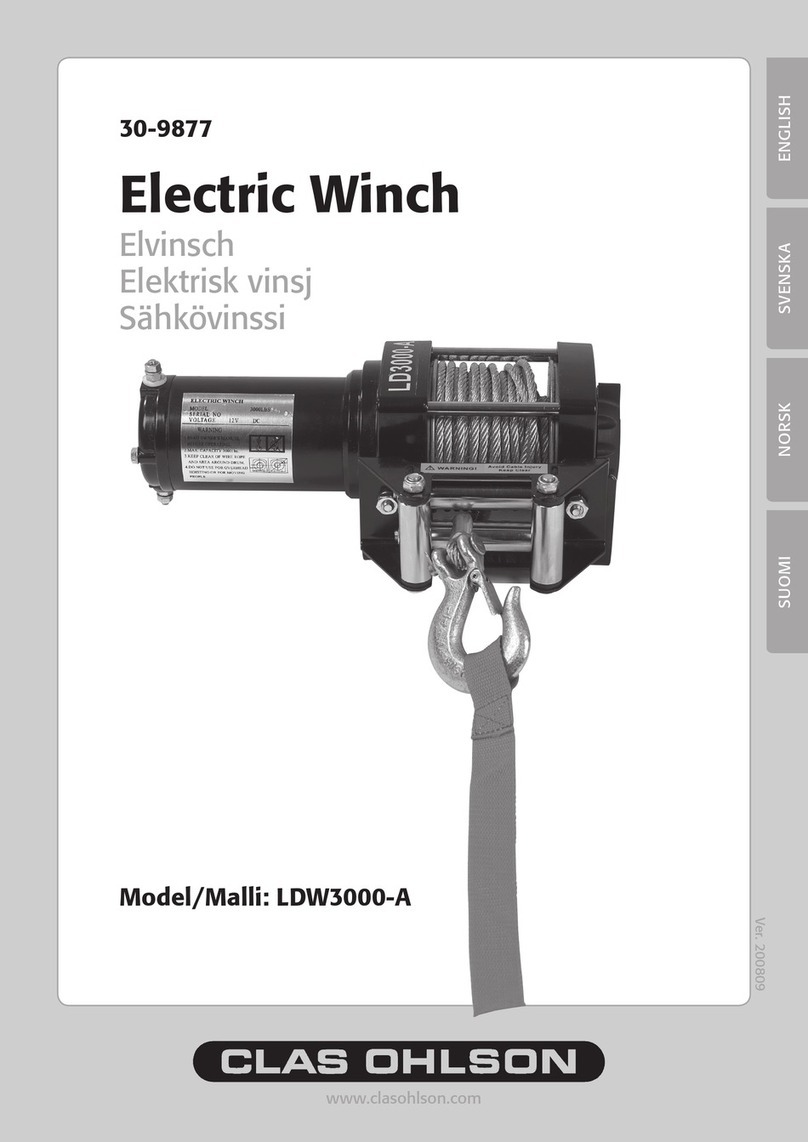
Deficiencies revealed through inspection, or noted during operation, must be reported to an appointed person. A determination must be made as to
whether a deficiency constitutes a safety hazard before resuming operation of the winch.
Records and Reports
Some form of inspection record should be maintained for each winch, listing all points requiring periodic inspection. A written report should be made
monthly on the condition of the critical parts of each winch. These reports should be dated, signed by the person who performed the inspection, and 5
kept on file where they are readily available for review. 1
lz
Wire Rope Reports w
Records should be maintained as part of a long-range wire rope inspection program. Records should include the condition of wire rope removed from
service. Accurate records will establish a relationship between visual observations noted during frequent inspections and the actual condition of wire
rope as determined by periodic inspections.
Frequent Inspection
On equipment in continuous service, frequent inspection should be made by operators at the beginning of each shift. In addition, visual inspections
should be conducted during regular operation for indications of damage or evidence of malfunction (such as abnormal noises),
1. WINCH. Prior to operation, visually inspect winch housings, controls, brakes and drum for indications ofdamage. Do not operate the winch unless
the wire rope feeds onto the drum smoothly. Any discrepancies noted must be reviewed and inspected further by authorized personnel instructed
in the operation, safety and maintenance of this winch.
2. WIRE ROPE. Visually inspect all wire rope which can be expected to be in use during the day’s operations. Inspect for wear and damage indicated
by distortion of wire rope such as kinking, “birdcaging,” core protrusion, main strand displacement, corrosion, broken or cut strands. If damage
is evident, do not operate winch until the discrepancies have been reviewed and inspected further by personnel instructed in the operation, safety
and maintenance of this winch.
l The full extent of wire rope wear cannot he determined by visual inspection. At any indication of wear inspect the wire rope in accordance
with instructions in “Periodic Inspection.”
3. AIR SYSTEM. Visually inspect all connections, fittings, hoses and components for indication of air leaks. Repair any leaks or damage. Check
and clean filters if equipped.
4. CONTROLS. During operation of winch, verify response to control is quick and smooth. If winch responds slowly or movement is unsatisfactory,
do not operate winch until all problems have been corrected.
5. BRAKES. During winch operation test brakes. Brakes must hold load without slipping. Automatic brakes must release when winch motor throttle
6. is operated. If brakes do not hold load, or do not release properly, the brakes must be adjusted or repaired.
WIRE ROPE REEVING. Check reeving and ensure wire rope is properly secured to the drum.
7. LUBRICATION. Refer to the “LUBRICATION” section for recommended procedures and lubricants,
Periodic Inspection
Frequency of periodic inspection primarily depends on the severity of usage:
NORMAL HEAVY
yearly yearly SEVERE
quarterly
Disassembly may be required for HEAVY or SEVERE usage. Keep accumulative written records of periodic inspections to provide a basis for
continuing evaluation. Inspect all items listed in “Frequent Inspection.” Also inspect the following:
1. FRAMES and UPRIGHTS. Check for deformed, cracked or corroded main components. If external evidence indicates the need for additional
inspection return winch to your nearest Ingersoll-Rand service repair center.
2. FASTENERS. Check retainer rings, split pins, capscrews, nuts, and other fasteners on winch, including mounting bolts. Replace if missing or
damaged and tighten if loose.
3.
4. DRUM AND SHEAVES. Check for cracks, wear or damage, Replace if necessary,
WIRE ROPE. In addition to Frequent Inspection requirements, also inspect for the following:
a. Build-up of dirt and corrosion. Clean with steam or a stiff wire brush to remove dirt and corrosion if
necessary.
b. Loose or damaged end connection. Replace if loose or damaged.
C. Check wire rope anchor is secure in drum.
d. Verify wire rope diameter. Measure the diameter of the wire rope from crown-to-crown throughout the life
of the wire rope. Recording of the actual diameter should only be done with the wire rope under equivalent
loading and in the same operating section as accomplished during previous inspections. If the actual
diameter of the wire rope has decreased more than 0.4 mm (1164inch) a thorough examination of the wire
rope should be conducted by an experienced inspector to determine the suitability of the wire rope to remain
in service. (Refer to Dwg. MHTPA0056). (Dwg. MHTPA0056)
5. ALL COMPONENTS. Externally inspect for wear, damage, distortion, deformation and cleanliness, Clean, replace or lubricate components as
required.
6. BRAKE. Test brake to ensure proper operation. Brake must hold a 125% rated load with full drum without slipping. If indicated by poor operation
or visual damage, return winch to a authorized service center for repair. Check all brake surfaces for wear, deformation or foreign deposits. If
brake lining thickness appears to be worn, contaminated or damaged the brake band should be replaced. Clean and replace components as
necessary.
7. FOUNDATION OR SUPPORTING STRUCTURE. Check for distortion, wear and continued ability to support winch and rated load. Ensure
8. winch is firmly mounted and that fasteners are in good condition and tight.
LABELS AND TAGS. Check for presence and legibility of labels. Replace if damaged or missing.
8
